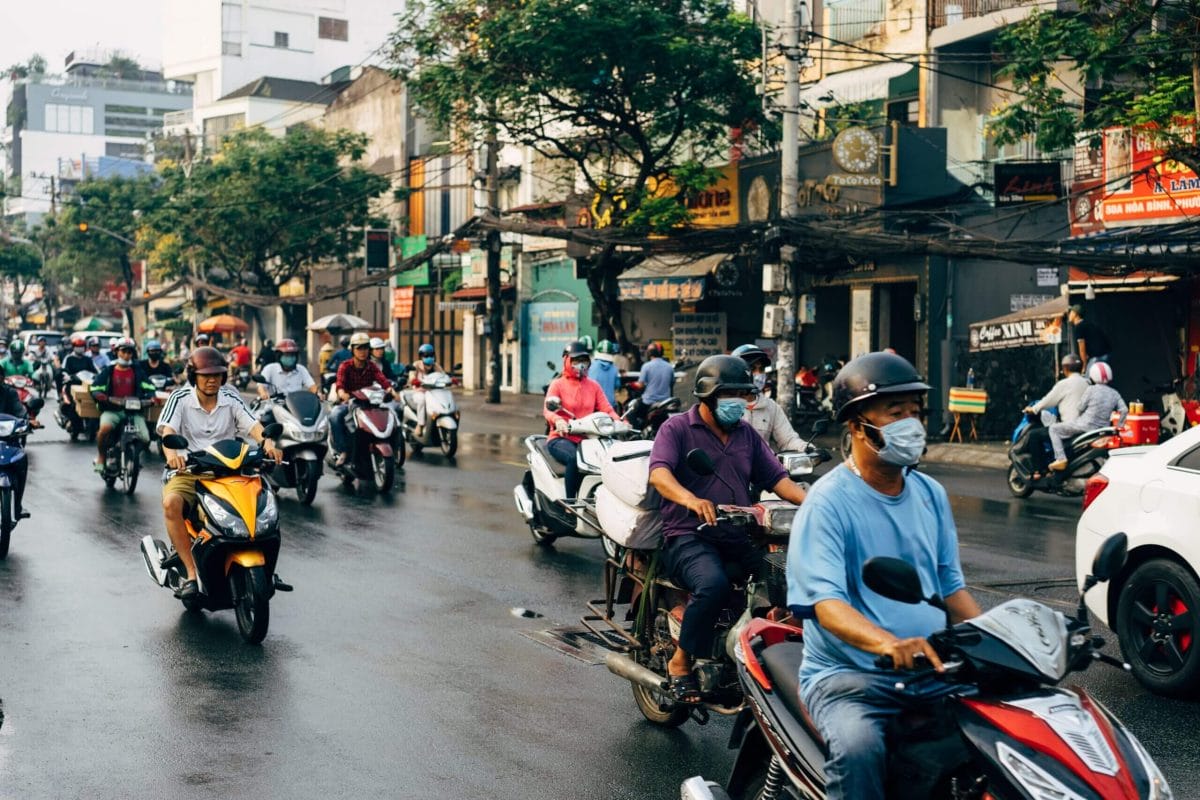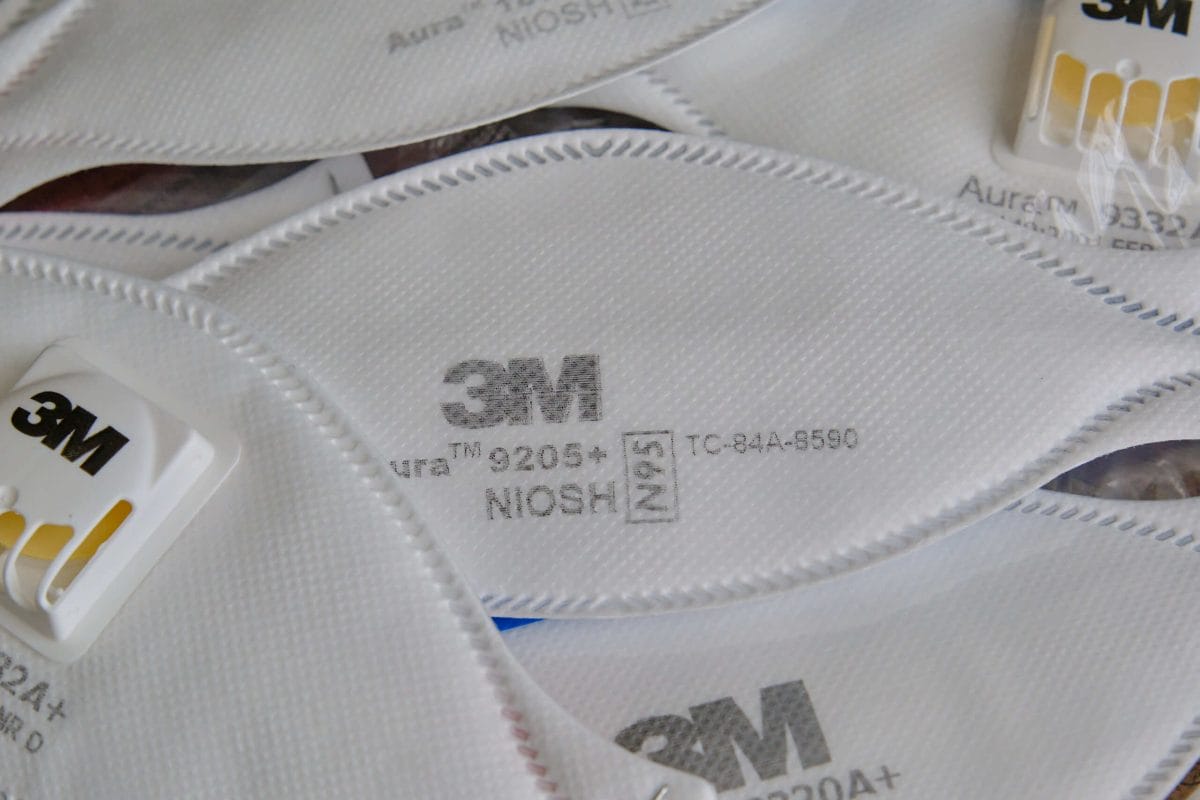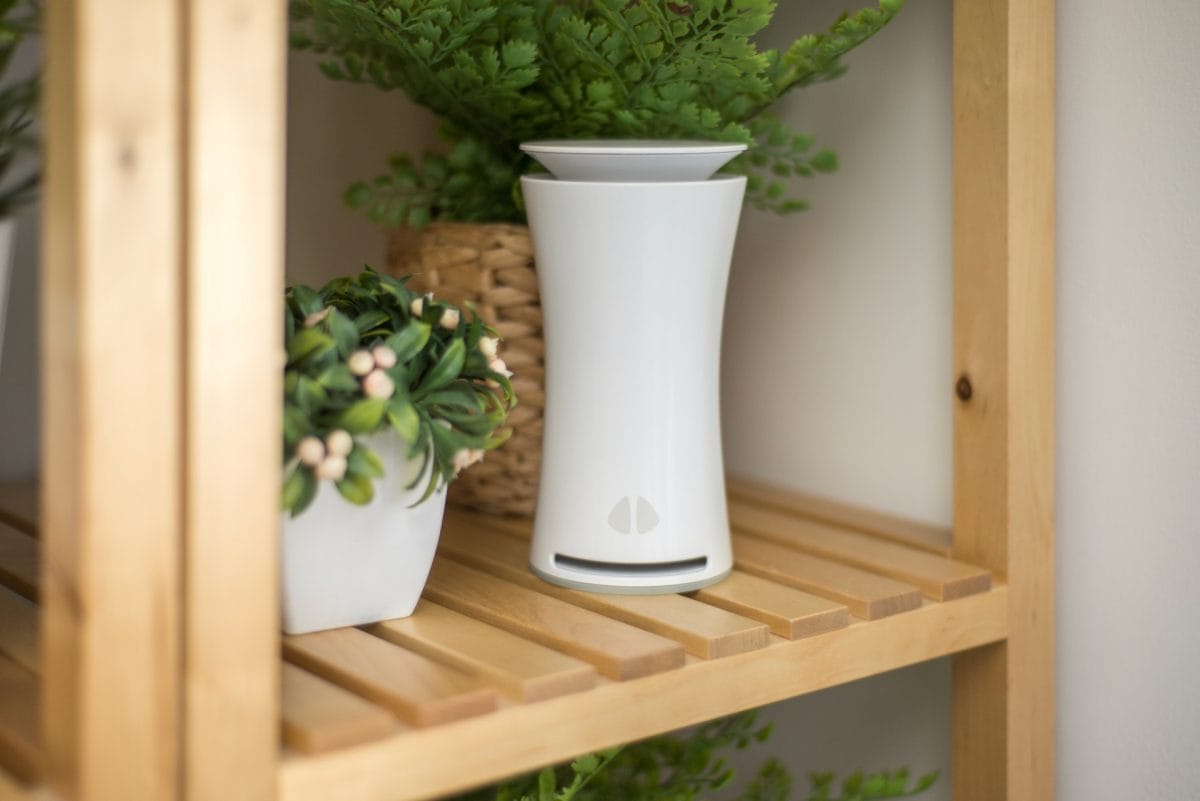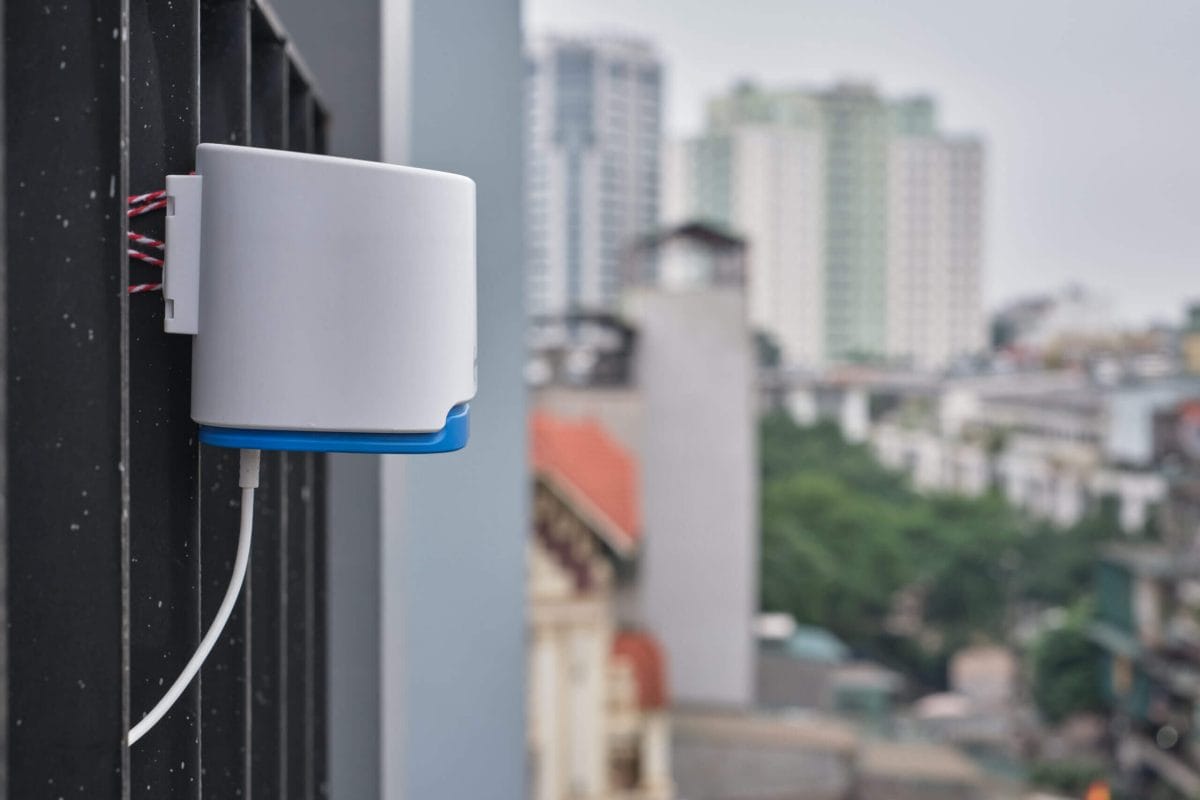Air pollution in Pakistan, a pressing environmental concern, mirrors a global health emergency silently unfolding. In a country marked by rapid urbanization and industrial growth, the air quality issue has escalated, raising alarms for public health and environmental sustainability. This introduction delves into the multifaceted problem of air pollution in Pakistan, setting the stage for a detailed exploration of its causes, impacts, and potential solutions.
Pakistan, a country with a rich cultural heritage and natural beauty, now faces a stark environmental challenge. Major cities like Lahore, Karachi, and Islamabad are often shrouded in smog, a grim reminder of the air quality crisis. According to the World Air Quality Report, several Pakistani cities consistently rank among the most polluted globally. This alarming fact underscores the urgency of addressing air pollution in the country.
Interestingly, the air pollution crisis in Pakistan bears striking similarities to the situation I recently witnessed in Delhi, India. During my trip to India, I experienced first-hand the suffocating smog that blankets the city, especially during winter months. The causes are remarkably similar: vehicular emissions, industrial pollutants, and seasonal agricultural burning. This resemblance is not coincidental but rather a reflection of shared geographical and socio-economic factors that exacerbate air pollution in the South Asian region.
One striking fact about Pakistan’s air pollution is its impact on public health. According to a study by the State of Global Air, air pollution is a leading cause of death in Pakistan, with tens of thousands of premature deaths attributed to it annually. This statistic is not just a number but a sombre indicator of the human cost of environmental neglect.
Furthermore, economic implications are equally significant. The World Bank estimates that environmental degradation, including air pollution, costs Pakistan about 6% of its Gross Domestic Product (GDP) annually. This economic burden is a wake-up call for urgent action and policy intervention.
As we progress through this article, we’ll explore these dimensions in detail, understanding the sources of air pollution, its health and environmental impacts, and the steps being taken to mitigate it. Additionally, we’ll draw parallels with other regions facing similar challenges, such as the Philippines, Vietnam, Thailand, and Seoul, where air pollution has been a longstanding issue.
In conclusion, the air pollution crisis in Pakistan is a complex issue that requires a multi-faceted approach. My personal experiences in Delhi have reinforced my belief that raising awareness and advocating for sustainable practices are crucial steps towards cleaner air. As we delve deeper into Pakistan’s air pollution, remember that this is not just a local issue but a global challenge that demands collective action and shared responsibility.
Subscribe to BreatheSafeAir
Air pollution is a silent killer that affects millions of people worldwide. Start protecting yourself today.
This post contains affiliate links. For more information, please refer to my affiliate disclaimer.
Information on this blog is for informational purposes only. Readers are encouraged to confirm the information herein with other sources. Furthermore, this information is not intended to replace medical advice from professionals. This website assumes no responsibility for the accuracy of the information, which is subject to change without notice.
Is Air Pollution an Issue in Pakistan?

Air pollution in Pakistan has escalated into a crisis that deeply affects millions of people and the environment. With its cities frequently blanketed in smog, the nation faces a substantial challenge that calls for immediate attention and action. This section will shed light on the key facts and figures that underline the severity of the air pollution issue in Pakistan. While we will not delve into the specific contributing factors or the detailed health impacts here – topics reserved for later discussion – it’s crucial to understand the scale and seriousness of the air pollution problem facing the country today.
Pakistan’s struggle with air pollution is evident from the tangible haze that often engulfs its cities, reducing visibility and leaving a tangible impact on daily life. The issue is so severe that it has placed Pakistani cities on the global map for the wrong reasons – as some of the most polluted in the world. In 2019, Lahore’s air quality index (AQI) frequently surpassed 300, categorizing it as ‘hazardous’ according to international standards.

Most polluted cities in the world. IQAir.
One of the most startling indicators of the severity of air pollution in Pakistan is its impact on life expectancy. Research indicates that air pollution reduces the average life expectancy in Pakistan by 3.9 years. This data, derived from the Air Quality Life Index (AQLI) developed by the Energy Policy Institute at the University of Chicago, underscores the hidden cost of polluted air – a cost measured in years of human life.
Economically, the toll is equally significant. The World Bank has estimated that environmental degradation, including air pollution, costs Pakistan approximately 6% of its GDP annually. This economic loss manifests in various forms – healthcare costs due to pollution-related diseases, lost labour productivity, and decreased agricultural yields due to polluted air.
The geographical and topographical features of Pakistan exacerbate the air pollution issue. The country’s major cities are located in areas where the geography tends to trap air pollutants, leading to higher concentrations of harmful particles in the air. This situation is similar to what I observed in Delhi, India, where geographical factors contribute to the trapping of pollutants, particularly during the colder months.
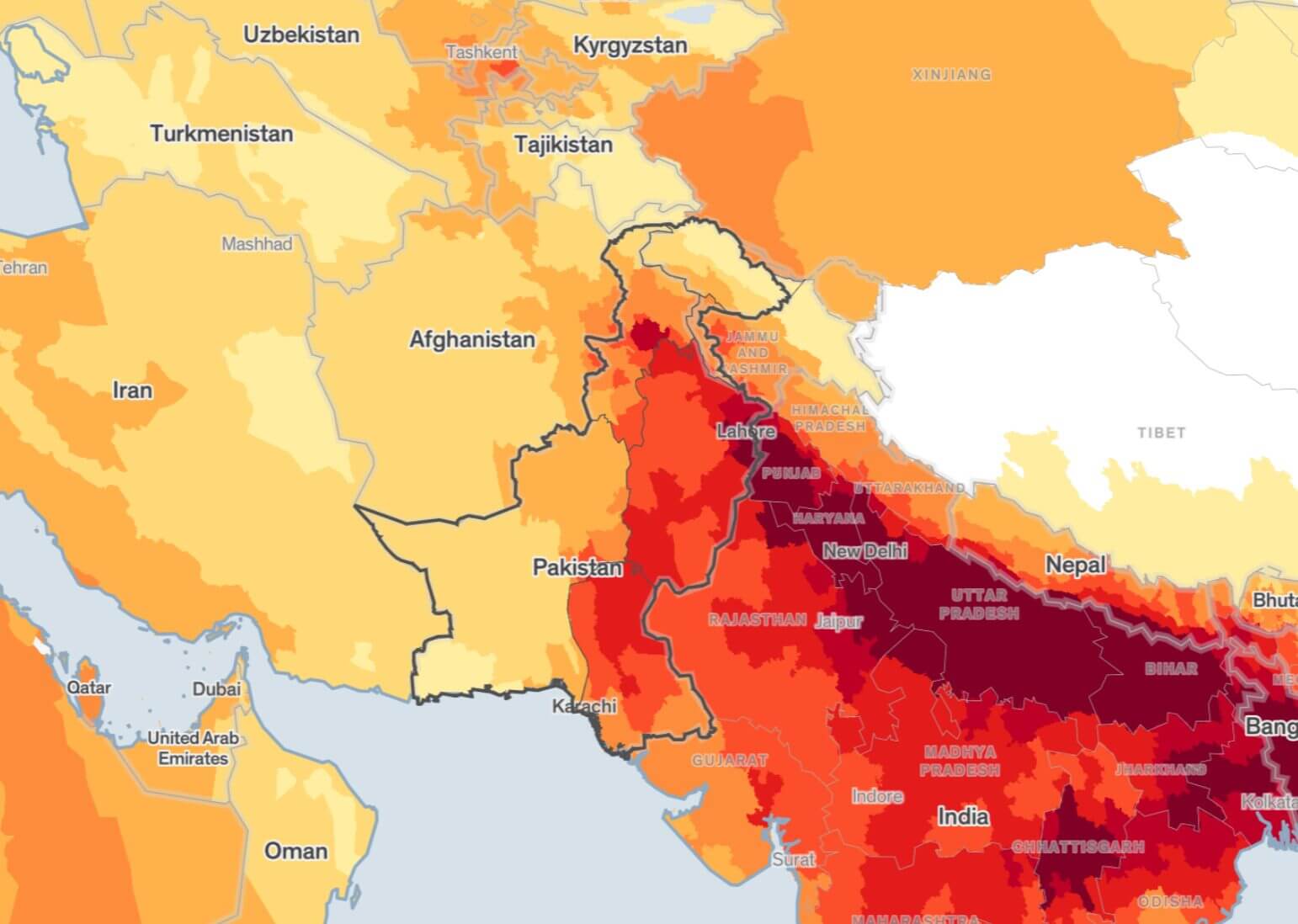
Moreover, Pakistan’s rapid urbanization and population growth have increased energy consumption and vehicular emissions, further contributing to the air quality crisis. The issue is not confined to urban areas alone; rural regions in Pakistan also face air quality challenges, particularly due to practices like crop burning and the use of low-quality fuels for cooking and heating.
The seasonal variation in air pollution levels in Pakistan is another point of concern. During the winter, the air quality deteriorates significantly, leading to the phenomenon locally known as ‘smog season.’ This seasonal spike in pollution levels not only disrupts daily life but also poses additional health risks to the population.
In conclusion, air pollution in Pakistan is an undeniable issue with far-reaching implications. Its impact on life expectancy, economic health, and the overall quality of life is a clear call for urgent action. As we delve deeper into the specific aspects of air pollution in Pakistan in the following sections, it becomes increasingly clear that this environmental challenge demands immediate and sustained attention.
Causes of Air Pollution in Pakistan
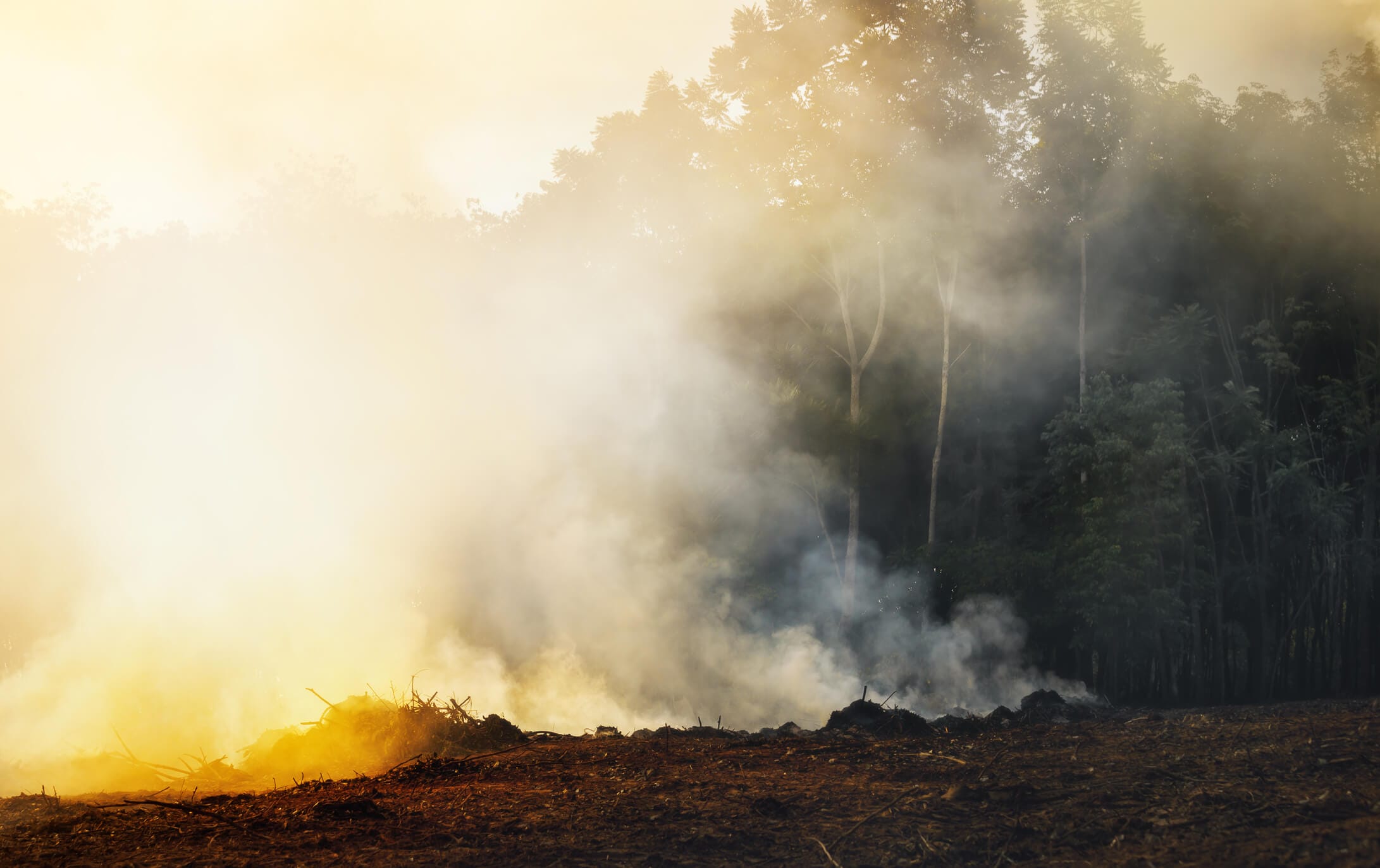
After understanding the scope of the air pollution crisis in Pakistan, it’s essential to delve into the primary contributors to this environmental challenge. This section will explore the main sources of air pollution in Pakistan, detailing how each contributes to the overall problem and the specific pollutants they emit. Identifying these causes is a critical step in formulating effective strategies to combat air pollution in the country.
Industrial Emissions
One of the most significant contributors to air pollution in Pakistan is industrial activity. Industries such as cement, steel, and textile manufacturing release a range of pollutants, including particulate matter (PM2.5 and PM10), sulfur dioxide (SO2), nitrogen oxides (NOx), and volatile organic compounds (VOCs). These emissions are particularly high in industrial zones, where regulations and enforcement are often lacking. The particulate matter from these industries not only deteriorates air quality but also poses severe health risks.
Vehicular Emissions
The burgeoning number of vehicles on Pakistan’s roads, many of which are outdated and poorly maintained, contribute substantially to air pollution. Vehicular emissions are a major source of nitrogen oxides, carbon monoxide (CO), particulate matter, and hydrocarbons. In urban areas, traffic congestion exacerbates the problem, leading to higher concentrations of these pollutants in the air.
Agricultural Burning
Agricultural practices, particularly the burning of crop residues, significantly contribute to air pollution in Pakistan. This practice, common in rural and peri-urban areas, releases large amounts of particulate matter, carbon monoxide, and volatile organic compounds into the atmosphere. The impact of agricultural burning is especially pronounced during certain times of the year, contributing to seasonal variations in air quality.
Domestic Fuel Burning
In many areas of Pakistan, especially in rural regions, the burning of biomass and low-quality fuels for cooking and heating is a major source of indoor and outdoor air pollution. This practice releases a variety of pollutants, including particulate matter, carbon monoxide, and polycyclic aromatic hydrocarbons (PAHs). The reliance on such fuels is often due to a lack of access to cleaner energy sources.
Natural Causes
While human activities are the primary drivers of air pollution in Pakistan, natural factors also play a role. Dust storms, particularly in arid and semi-arid regions of the country, contribute to the levels of airborne particulate matter. Additionally, geographical factors can trap pollutants in certain areas, exacerbating air quality issues.

Pollution sources in Pakistan, according to different studies.
Understanding these causes of air pollution is pivotal in addressing the crisis in Pakistan. By identifying the specific pollutants associated with each source, policymakers and environmentalists can tailor their strategies to be more effective. As we move forward, exploring each of these sources in depth will provide insights into the multifaceted nature of air pollution in Pakistan and the steps needed to mitigate it.
Seasonality of Air Pollution in Pakistan
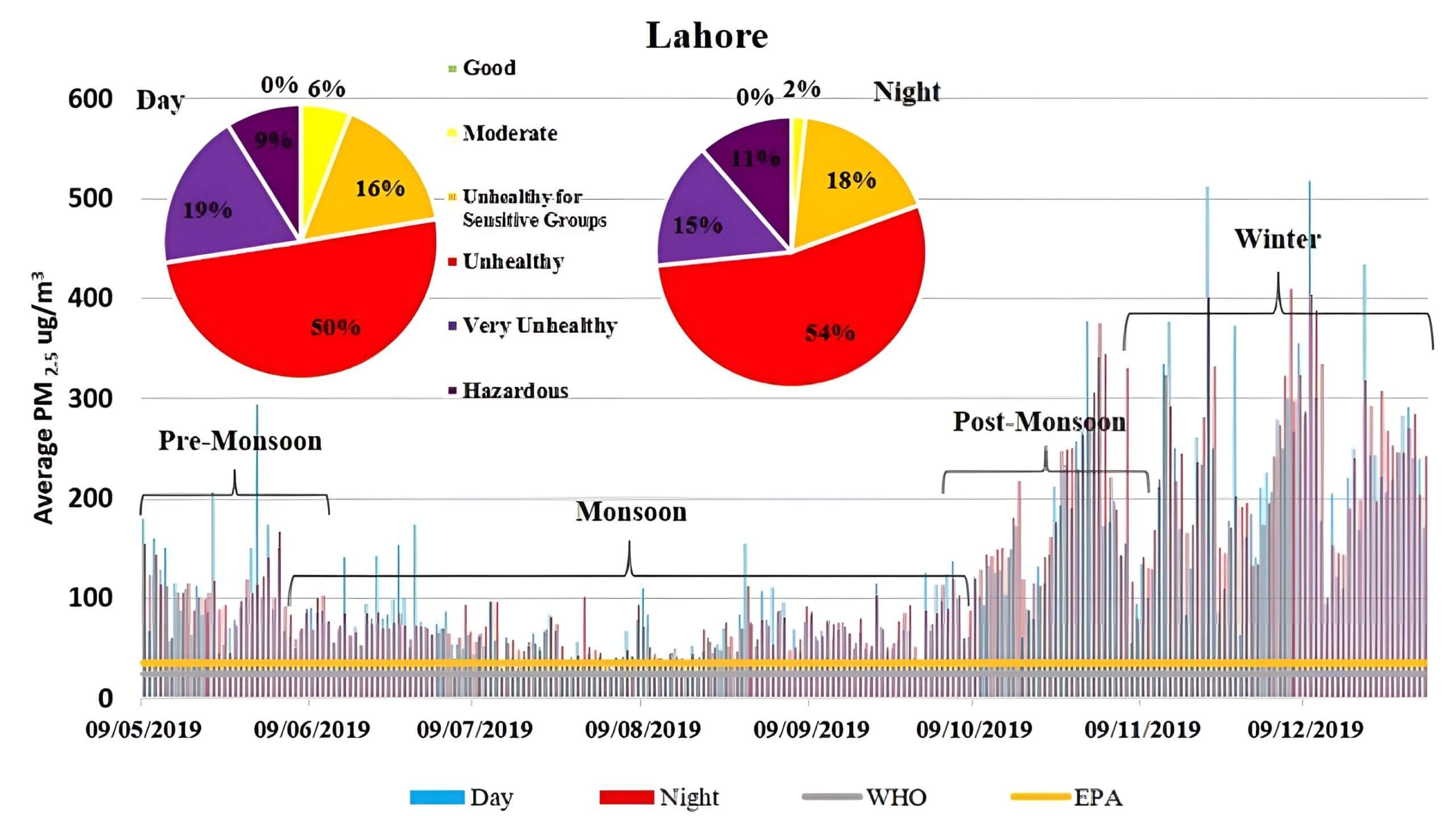
Seasonal air pollution in Lahore.
The impact of seasonal changes on air pollution in Pakistan, particularly in major cities like Lahore, is a significant environmental and public health concern. The variations in air pollution levels are influenced by a combination of natural phenomena, human activities, and geographic factors.
In Lahore, air pollution reaches hazardous levels during the winter season, especially from October to February. This spike in pollution is attributed to several factors, including temperature inversion, where a layer of warm air traps pollutants close to the ground, preventing their dispersion. This phenomenon leads to the accumulation of pollutants, causing dense smog and significantly deteriorating air quality.
Several key factors contribute to the heightened air pollution in Lahore during winter:
- Brick kilns and industrial emissions: Smoke from brick kilns and steel mills, alongside industrial emissions, plays a substantial role in increasing air pollution.
- Agricultural practices: Crop stubble burning, particularly in the wider Punjab province, is a major contributor to winter smog. This practice is common after harvesting rice to prepare fields for wheat crops.
- Vehicular pollution: The growing number of vehicles on the roads adds significantly to the city’s air pollution, especially during winter when atmospheric conditions trap pollutants closer to the ground.
- Deforestation and urban development: The loss of trees and green spaces due to infrastructure development exacerbates the air pollution problem.
The Indo-Gangetic Plain (IGP), extending into Pakistan, significantly influences the region’s air pollution. The topography of the Himalayas along the IGP plays a crucial role in the accumulation of aerosols, leading to elevated levels of fine particulate matter (PM 2.5). The concentrations of PM 2.5 in this region often exceed WHO standards due to anthropogenic emissions, biomass burning, and specific meteorological conditions.
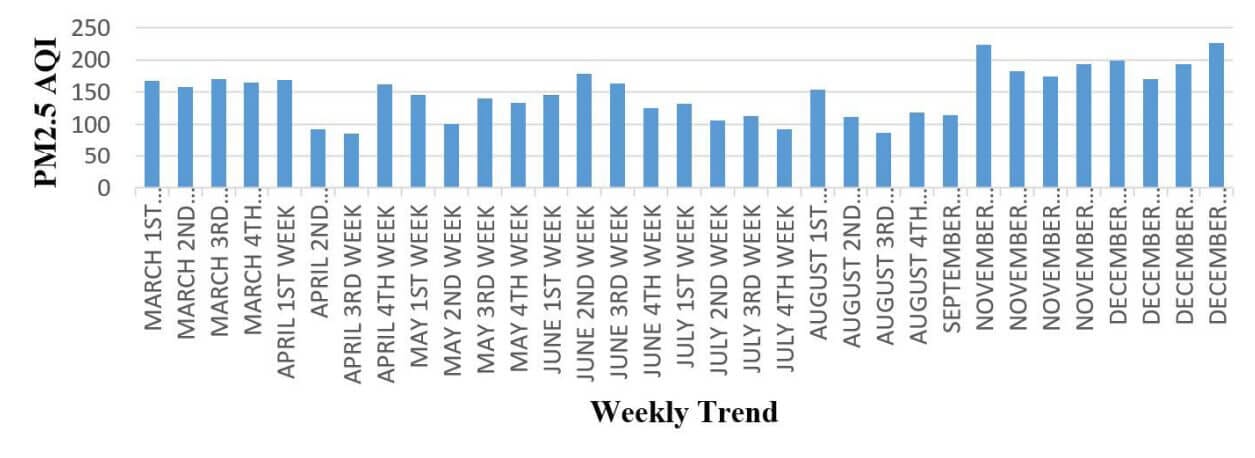
PM2.5 weekly trends in Lahore.
While the winter season in cities like Lahore experiences severe air pollution, the dynamics in Southern Pakistan, particularly in cities like Karachi, exhibit a different pattern. This variation can be attributed to the region’s distinct climatic, geographical, and socio-economic factors.
In contrast to Lahore, Karachi’s air pollution levels tend to escalate during the summer months. Several factors contribute to this:
- Coastal Climate and Humidity: Karachi’s coastal location leads to high humidity levels. In summer, the combination of heat and humidity contributes to the formation of ground-level ozone, a critical pollutant.
- Urban Heat Island Effect: The dense urban infrastructure and lack of green spaces exacerbate the urban heat island effect, leading to higher temperatures and increased air pollution.
- Industrial Activity: Karachi, being a major industrial hub, witnesses heightened industrial activities in the summer, contributing significantly to air pollution.
- Energy Consumption: The increased demand for energy, especially for air conditioning, during the hot months leads to more emissions from power plants.
The monsoon season brings a unique set of challenges for air quality in Southern Pakistan:
- Dust and Particulate Matter: Monsoon winds carry dust and other particulate matter, which can aggravate air pollution levels.
- Increased Traffic Congestion: The monsoon season often leads to waterlogging and traffic congestion, contributing to higher vehicular emissions.
The variation in air pollution throughout the year in Southern Pakistan is less pronounced compared to cities like Lahore. However, the region still faces significant air quality challenges due to:
- Continuous Industrial Emissions: Industries in and around Karachi operate year-round, consistently adding pollutants to the air.
- Steady Urban Expansion: The ongoing urban expansion and associated activities contribute to air pollution throughout the year.
Understanding the seasonal variation in air pollution across different regions of Pakistan is crucial for effective policy-making and public health planning. While cities like Lahore face severe winter smog, the challenges in Karachi and other southern cities are distinct, necessitating region-specific strategies to combat air pollution.
Comparative Analysis with Neighbouring Countries
Air pollution in Pakistan is not a phenomenon that stands alone; it’s part of a larger, more complex puzzle that extends across South Asia. Neighbouring and nearby countries like India and Bangladesh are also grappling with similar challenges, painting a picture of a region united by a shared struggle against poor air quality. This interconnectedness is particularly evident in the case of transboundary air pollution, where pollutants do not respect national borders, leading to a collective impact on the region.

A telling illustration of this shared environmental challenge in the context of particulate air pollution is highlighted in the World Bank’s 2020 report. The report sheds light on the high levels of particulate matter, specifically PM2.5, prevalent in the region. India, Pakistan, and Bangladesh are all identified as countries with alarmingly high concentrations of these fine particles in the air. This information not only underscores the severity of the particulate pollution problem but also emphasizes the interconnected nature of air quality issues in South Asia.
The similarities in the causes of air pollution in these countries are noteworthy. Industrial emissions, vehicular pollution, and agricultural practices like crop stubble burning are key contributors. The impact of such activities transcends borders; for instance, crop burning in India has been linked to deteriorating air quality in cities like Lahore, Pakistan. This phenomenon underscores the essence of transboundary air pollution – a problem that starts in one country but has consequences in another.
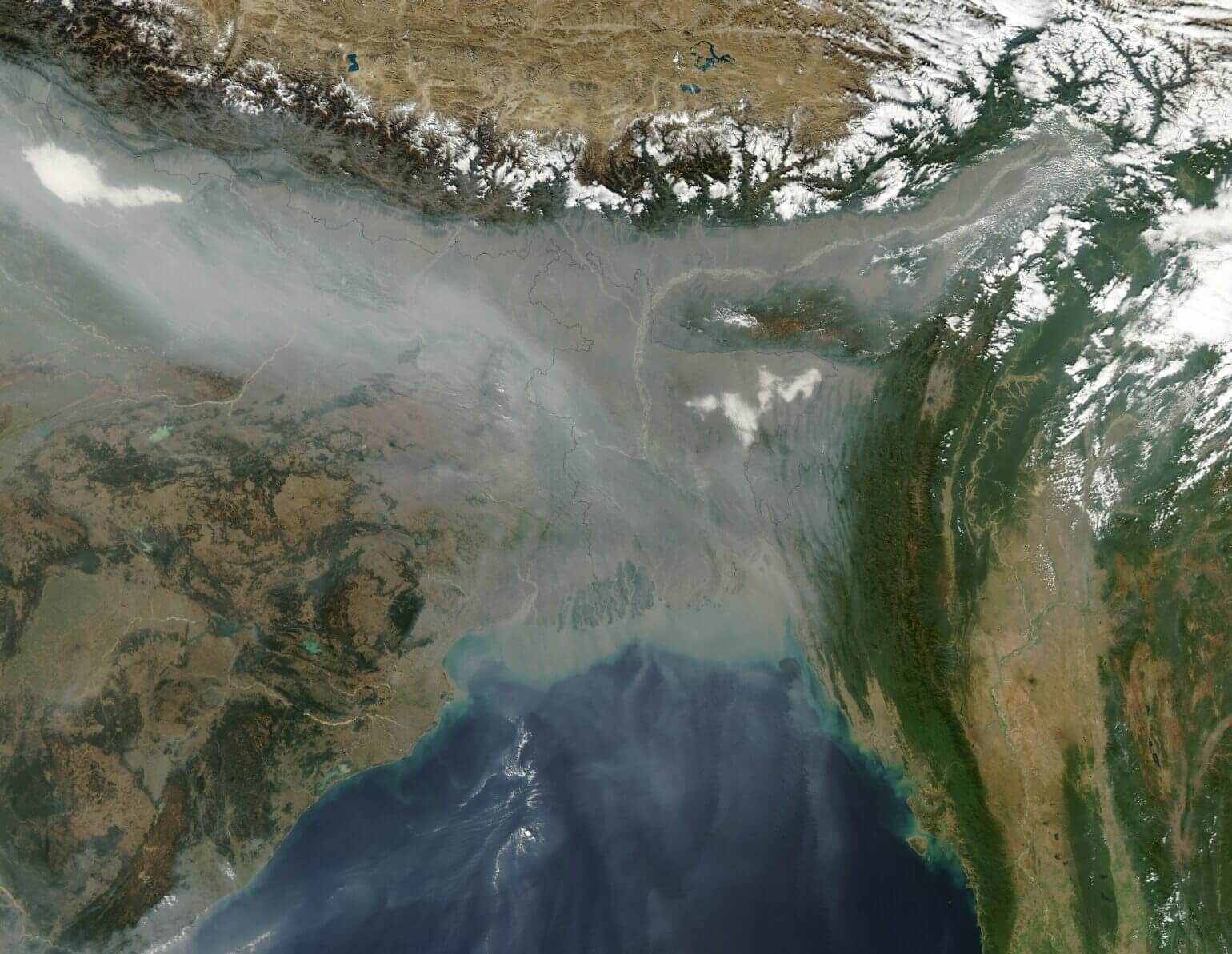
Air pollution is a big issue in Bangladesh, India and Pakistan – image from NASA.
The human cost of this pollution is alarmingly high across South Asia. A report by the Lancet Planetary Health revealed that air pollution contributed to over a million premature deaths in India in 2017. Pakistan and Bangladesh have reported similarly high figures, highlighting the severe health implications of the region’s air quality issues. Economically, too, the repercussions are significant. According to the World Bank, air pollution costs approximately 7.69% of Pakistan’s GDP, a figure echoed in the economic landscapes of its neighbors.
Efforts to address this regional challenge have seen some progress. The South Asian Association for Regional Cooperation (SAARC) has embarked on initiatives to set environmental standards and develop air quality monitoring networks. These steps are crucial, yet they demand greater commitment and momentum from the member countries to be truly effective.
Air pollution in Pakistan is part of a larger regional issue that affects South Asia as a whole. The transboundary nature of air pollution, with its shared sources and impacts, necessitates a collaborative approach to finding effective solutions. Regional cooperation and unified policy measures are essential in tackling this environmental challenge that knows no borders.
Health Effects of Air Pollution in Pakistan
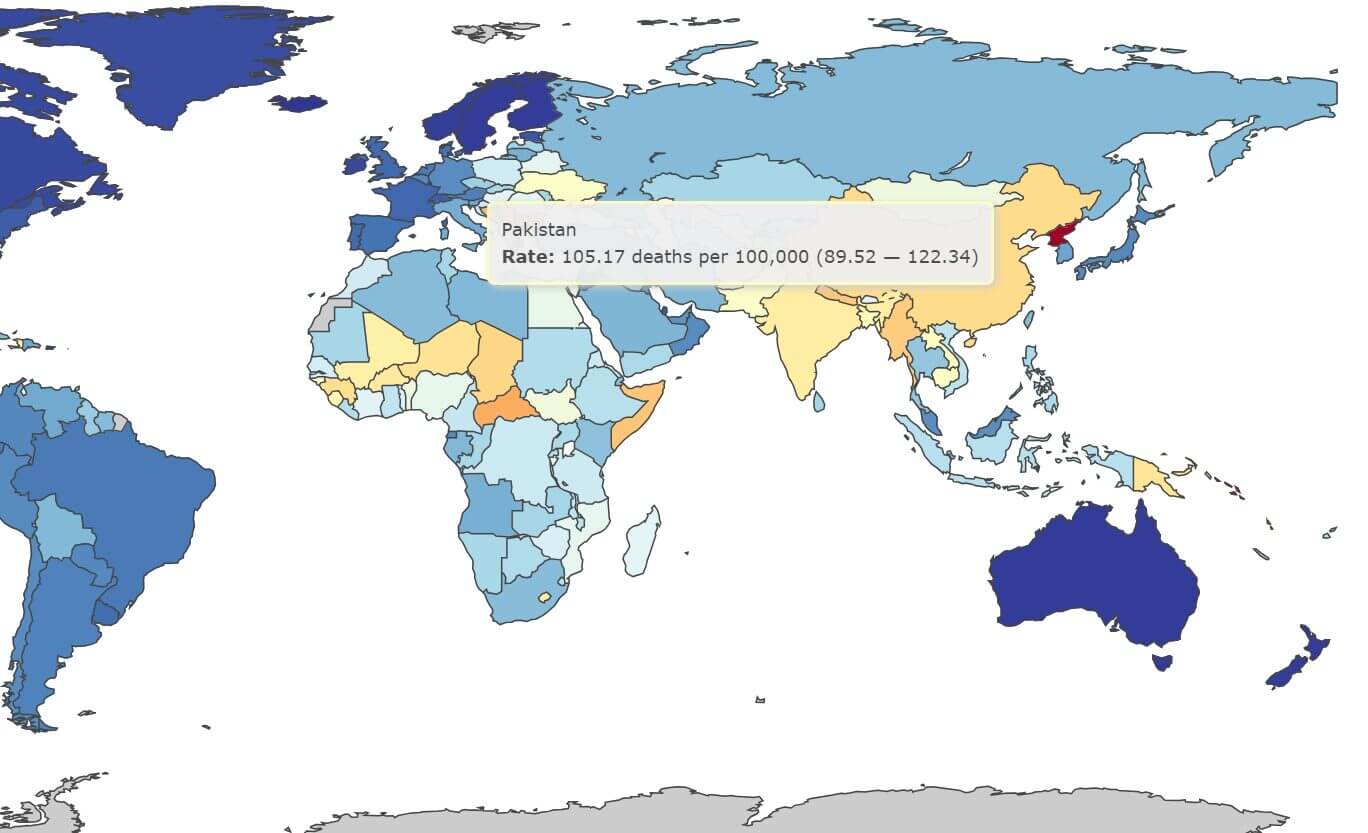
Institute of health metrics and evaluation.
Air pollution is a silent yet formidable health threat in Pakistan, with its impacts reaching far and wide. The detrimental health effects of air pollution are both immediate and long-term, affecting individuals from all walks of life. In this detailed analysis, we will delve into the specifics of the health impacts caused by air pollution in Pakistan. If you want to learn more, please feel free to check the sources I’ve used (linked below).
A profound indicator of the severity of air pollution in Pakistan is its impact on mortality. According to a report by the Institute for Health Metrics and Evaluation (IHME), in 2019, air pollution was responsible for approximately 128,000 deaths in Pakistan, making it a leading environmental risk factor for mortality in the country. This staggering number underscores the acute health crisis that air pollution represents. Furthermore, it’s worth noting that the actual number of deaths caused by air pollution-induced conditions is likely much higher than this number.
Moreover, life expectancy in Pakistan has been significantly affected by air pollution. A study published in the journal Environmental Science and Technology indicates that air pollution, particularly PM2.5, could reduce life expectancy in Pakistan by more than two years. This is a substantial impact, highlighting the urgent need for policies focused on improving air quality. Even more worryingly, other data shows this life expectancy decreased by as much as 3.9 years.
The range of health conditions associated with air pollution is extensive. Chronic exposure to polluted air in Pakistan has been linked to respiratory diseases like asthma and chronic obstructive pulmonary disease (COPD), cardiovascular diseases, strokes, and lung cancer. Children and the elderly are especially vulnerable to these health risks. The World Health Organization (WHO) has identified particulate matter as a significant contributor to respiratory and cardiovascular diseases worldwide, reinforcing the global relevance of this issue.
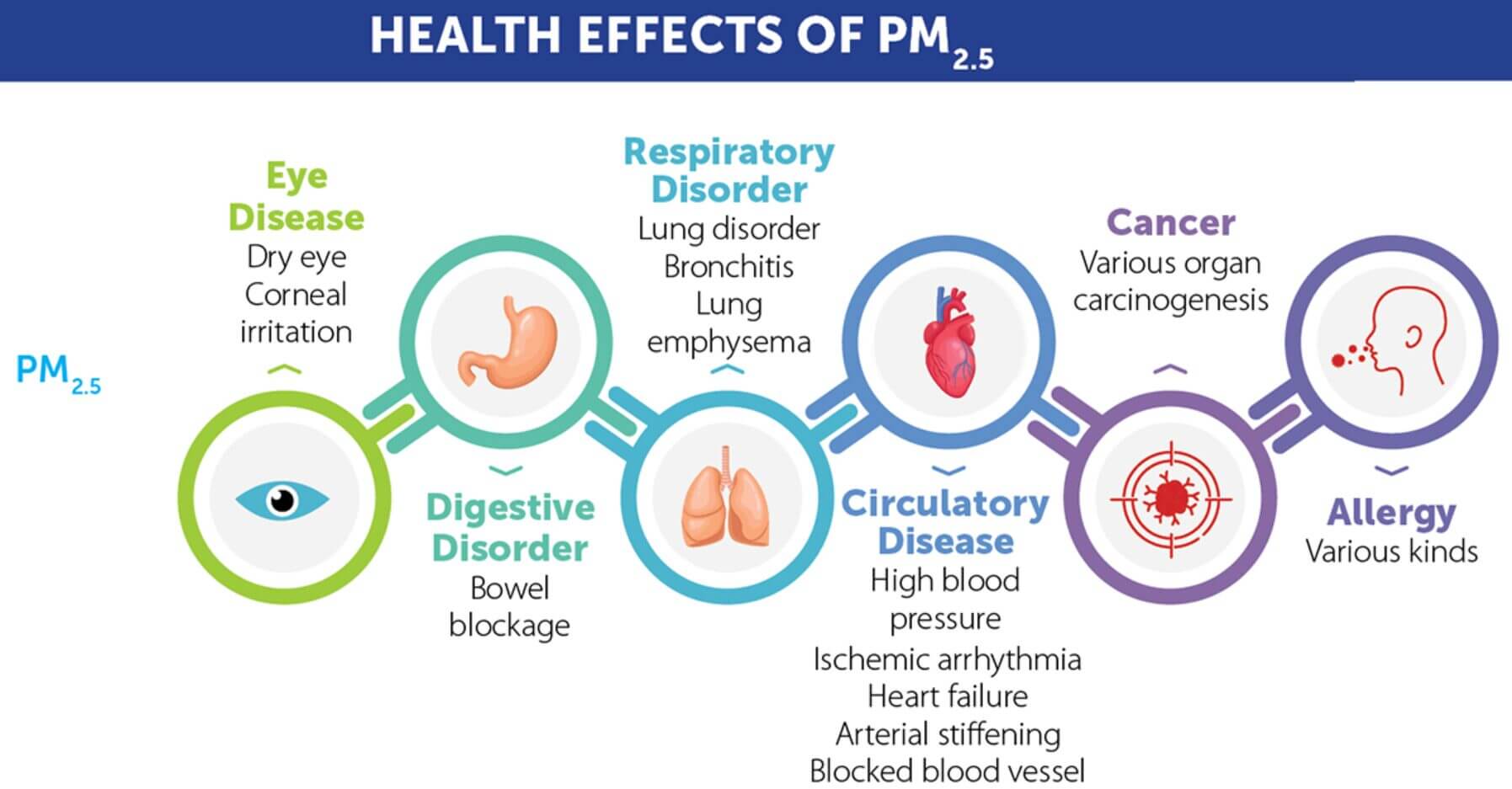
In addition to these conditions, emerging research suggests a possible link between air pollution and mental health issues, including depression and anxiety. While this area of study is relatively new, it underscores the broad and potentially far-reaching impacts of air pollution on health.
While the long-term effects of air pollution in Pakistan are profound, the short-term impacts are equally significant and merit attention. These immediate effects, felt across various demographics, highlight the urgent need for intervention and policy reform to mitigate the consequences of air pollution.
In the short term, exposure to high levels of air pollution in Pakistan has been linked to a spike in respiratory and cardiovascular complications. The pollutants, particularly fine particulate matter (PM2.5) and ozone, can exacerbate conditions like asthma, bronchitis, and other chronic respiratory diseases. A study conducted in Lahore, one of the most polluted cities in Pakistan, showed a direct correlation between high pollution days and increased hospital admissions for respiratory issues.
Similarly, cardiovascular health is significantly impacted. Short-term exposure to polluted air can trigger heart attacks, strokes, and acute hypertensive episodes. This is particularly concerning for the elderly and those with pre-existing heart conditions. The American Heart Association has published extensive research linking short-term exposure to particulate matter with cardiovascular risks, reinforcing the global relevance of these findings.
The health impacts of air pollution are not confined to Pakistan alone; this is a global crisis. According to the WHO, air pollution is responsible for an estimated 7 million premature deaths yearly. This includes both outdoor and household air pollution, with a significant portion of these deaths occurring in low- and middle-income countries, where air pollution levels are the highest.
In countries like India and Bangladesh, which share similar air quality issues with Pakistan, the health impacts are equally alarming. In India, air pollution is attributed to over a million premature deaths annually, while in Bangladesh, the number is in the tens of thousands. These figures reflect a regional health emergency that transcends national boundaries.
At-Risk Groups

At-risk groups from air pollution. I’m aware this image is from the Indian government, but the points are still accurate.
In Pakistan and globally, the detrimental effects of air pollution are not uniformly experienced across the population. Certain groups, notably children, the elderly, and individuals with pre-existing health conditions, face a disproportionately higher risk from both the short-term and long-term impacts of polluted air. I want to discuss a few of the increased risks that these groups face when it comes to the dangers of air pollution.
Children: Increased Vulnerability and Long-Term Consequences
Children, due to their developing bodies and respiratory systems, are particularly susceptible to the hazards of air pollution. In the short term, they are more likely to experience acute respiratory infections and exacerbations of asthma. A study conducted in Pakistan’s urban areas revealed a significant link between high pollution days and increased incidents of respiratory problems in children.
The long-term effects are even more concerning. Continuous exposure to poor air quality during critical developmental stages can lead to diminished lung function and the development of chronic respiratory conditions later in life. Moreover, there is emerging evidence suggesting that air pollution can adversely affect cognitive development and academic performance in children, implying far-reaching consequences on their future potential.
Elderly: Heightened Health Risks and Mortality
The elderly, with often pre-existing health conditions, are another group severely impacted by air pollution. Short-term exposure can precipitate acute cardiovascular and respiratory events, such as heart attacks and exacerbated COPD symptoms. These events are particularly dangerous for the elderly, leading to increased hospitalizations and healthcare use.
Over the long term, the cumulative effect of exposure to air pollutants can accelerate the decline in lung and heart function, contributing to increased mortality rates in this demographic. Studies have shown that even low-level, long-term exposure to particulate matter significantly increases the risk of death in older populations.
At-Risk Groups: Compounded Health Challenges
Individuals with pre-existing health conditions, such as asthma, heart disease, or diabetes, are more vulnerable to the effects of air pollution. Short-term exposure can trigger acute episodes, such as asthma attacks or cardiac events, leading to emergency medical situations. In the long term, these individuals may experience accelerated progression of their underlying conditions due to continual exposure to harmful pollutants.
In addition, socioeconomically disadvantaged groups often face compounded risks. They are more likely to live in areas with higher pollution levels and have limited access to healthcare, which exacerbates the impact of air pollution on their health. This highlights the intersection of environmental and social issues in the context of air pollution in Pakistan.
Conclusion
The impact of air pollution in Pakistan is not evenly distributed across its population. Children and the elderly, along with individuals with pre-existing health conditions and socioeconomically disadvantaged groups, bear the brunt of its adverse effects. This increased vulnerability necessitates targeted interventions and policies that prioritize the protection of these at-risk groups, both in terms of immediate relief and long-term health outcomes. Recognizing and addressing these disparities is crucial for a holistic approach to mitigating the impact of air pollution in Pakistan.
Historical Perspective on Air Pollution in Pakistan
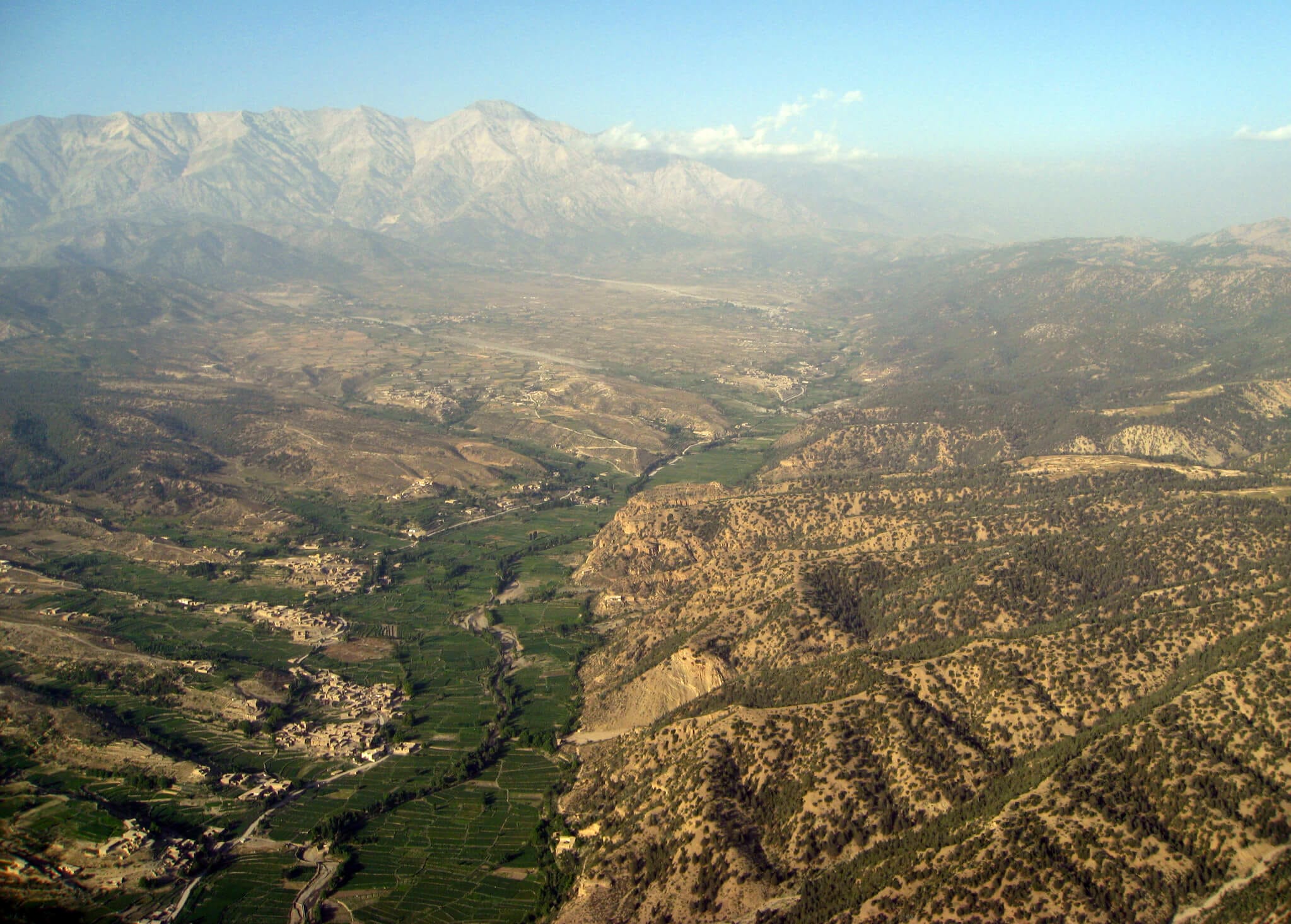
In the late 20th century, specifically during the 1980s and 1990s, Pakistan underwent a phase of rapid industrialization. This era was characterized by a significant increase in air pollution levels, primarily attributed to unregulated industrial emissions and a surge in vehicular usage. During these decades, environmental regulations were sparse or ineffective, leading to a noticeable deterioration in air quality. Reports from the Pakistan Environmental Protection Agency from this period provide insights into the escalating pollution levels, highlighting the impact of industrialization on air quality.
However, the onset of the 2000s marked a turning point, with growing awareness of environmental issues within Pakistan. This period witnessed the introduction of various environmental policies aimed at curbing air pollution (which we will discuss in the next section). Measures such as implementing stricter emissions standards for industries and introducing unleaded petrol were significant steps in this direction. Studies conducted in the mid-2000s, as documented in various Pakistan Air Quality Reports, indicated a slight improvement in air quality in some urban areas, suggesting a positive impact of these early environmental policies.
Despite these efforts, the rapid urbanization of cities like Karachi, Lahore, and Islamabad in recent years has introduced new challenges in air quality management. The proliferation of vehicles, ongoing industrial activities, and dependence on fossil fuels for energy production have all escalated air pollution levels in urban centres. Recent studies have indicated that air pollution levels in major cities have reached concerning levels, particularly during the winter months when smog becomes a prevalent issue.
Pakistan’s journey towards economic development has often been at the expense of environmental health. The pursuit of industrial growth, crucial for the economy, has increased pollution levels. Yet, there is an emerging realization of the need to balance economic growth and sustainable environmental practices. As someone who has closely followed Pakistan’s environmental trajectory, I believe that the future lies in adopting green technologies and sustainable practices. These can support economic growth while preserving air quality, as I’ve discussed in some previous articles on this site.
Looking forward, Pakistan’s air pollution trajectory hinges on effective policy implementation, increased public awareness, and a shift towards cleaner technologies. Initiatives such as the National Electric Vehicle Policy and the growing investment in renewable energy sources are positive steps. However, it is crucial for both policymakers and citizens to work collaboratively towards a cleaner and healthier environment.
In conclusion, Pakistan’s historical perspective on air pollution reflects a continual balancing act between economic growth and environmental sustainability. While certain improvements are notable, the overall trend underscores the need for more robust and sustainable environmental management practices. The future air quality in Pakistan will depend on the collective efforts of the government, industry, and the public in adopting eco-friendly practices. This historical understanding provides valuable insights into the measures needed to effectively combat air pollution, not just through policy but also through a shift in public consciousness towards a more sustainable way of living.
Government Policies and Measures
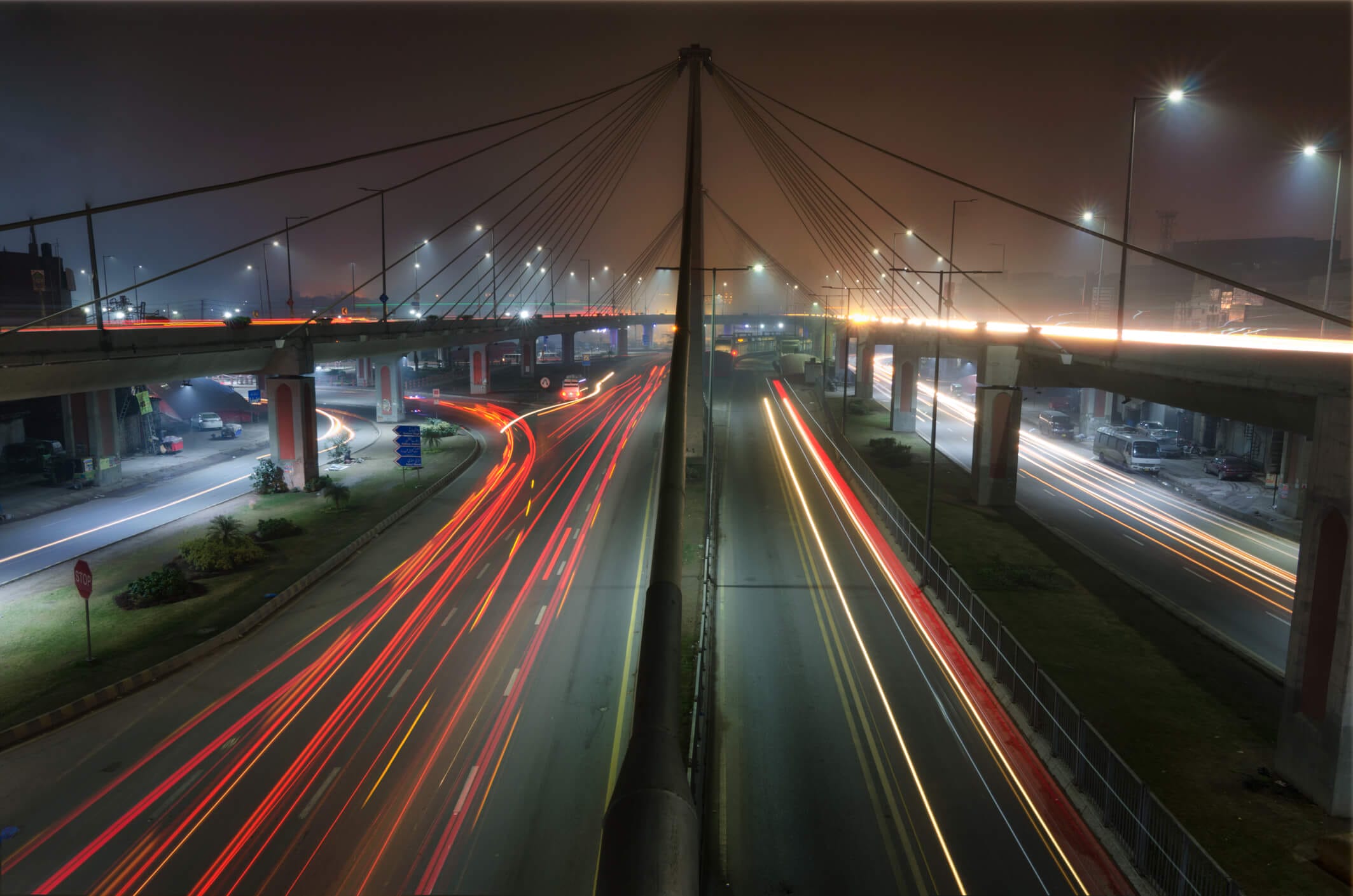
Clearly visible pollution in Lahore at night.
With air pollution being such a severe issue in Pakistan, it’s clear that action is needed at the highest levels. The Government of Pakistan has implemented several policies to reduce the dangers of air pollution, focusing on various sectors and strategies. Here are some of the key initiatives:
- National Clean Air Policy (2023): One major step is the implementation of the 2023 National Clean Air Policy, aligned with Pakistan’s 2021 Nationally Determined Contributions (NDC) and the 2021 National Climate Change Policy. This policy aims to promote clean cooking fuel and technologies, particularly in rural and semi-urban areas where traditional biomass fuels are prevalent. The policy’s goal is to develop a National Clean Cooking Strategy, which includes identifying barriers to adopting clean cooking fuels and technologies and developing a roadmap to scaling up renewable energy in the overall energy mix. Read more.
- National Clean Air Plan: The Ministry of the Environment is developing the National Clean Air Plan, which sets targets for air pollution concentration, identifies actions to mitigate air pollution, and outlines a plan for coordinating action on air quality management. The development of this plan has also resulted in Pakistan’s first national air pollutant inventory, which includes quantification of black carbon and other air pollutants at both the national and provincial scales. The plan focuses on five sectors at the national scale: converting wood stoves and biomass cooking into cleaner methods, removing the worst-emitting vehicles and implementing Euro fuel standards in the transport sector, stopping open burning in the agricultural sector, stopping open burning of waste, and properly regulating industry emissions. Read more.
- Global Methane Pledge: Pakistan is a signatory to the Global Methane Pledge, committing to reduce global methane emissions by at least 30% by 2030. The Clean Air Plan outlines various ways the country can enhance its methane emissions reductions, such as leak detection and repair in the oil and gas sector, better manure management in agriculture, and improved waste management. Pakistan aims to move to 60% renewable energy, including converting 30% of its vehicles to electric and banning imported coal, as part of its efforts to meet its Nationally Determined Contributions target of reducing projected emissions by 50% by 2030, conditional on international support. Read more.
- Pakistan Clean Air Plan (PCAP): Announced on World Environment Day 2021, the revised Pakistan Clean Air Plan was prepared with the support of the Asian Development Bank (ADB). This plan aims to improve air quality in the country through systematic monitoring and implementation of various policy, technological, and management-based measures. The PCAP assesses ongoing air pollution reduction efforts being made by national and local stakeholders in Pakistan and includes feedback received from provincial stakeholders. Read more.
These policies represent a comprehensive approach by the Pakistan government to tackle the multifaceted issue of air pollution, focusing on both reducing emissions and improving air quality management.

Maps like this make it apparent that this issue must be tackled together. Source.
However, while the Pakistan government can take action, it becomes clear that inter-nation collaboration is not just beneficial but essential to improving air quality across Pakistan, India, and Bangladesh. The transboundary nature of air pollution necessitates a strategy that transcends national borders, focusing on joint efforts and shared solutions.
One of the primary steps towards this is the establishment of a regional framework for air quality management. This framework would involve standardized air quality monitoring and data-sharing protocols across the three countries. By harmonizing the way air quality data is collected and analyzed, policymakers can gain a more accurate and comprehensive understanding of the pollution levels and their sources. This approach is supported by environmental experts and agencies that emphasize the importance of data in tackling environmental challenges.
Another crucial area is the formulation and implementation of regional policies. These policies could focus on reducing emissions from shared sources, such as vehicular pollution, industrial emissions, and agricultural burning. A regional agreement to limit emissions from these sources, coupled with the adoption of cleaner technologies, could significantly reduce the overall air pollution levels. Examples of such agreements can be found in other parts of the world, like the European Union, where member states adhere to collective environmental standards.
Investment in joint research initiatives is also key. Collaborative research can provide insights into the efficacy of various pollution control methods and help in understanding the unique dynamics of air pollution in South Asia. These initiatives could be funded and managed by a consortium of governments and international environmental organizations.
Public awareness and education campaigns can play a pivotal role in this collaborative effort. By raising awareness about the causes and effects of air pollution and the importance of regional cooperation in addressing these issues, there can be a significant shift in public attitudes and behaviours. Such campaigns can be more effective if they are culturally tailored to each country while maintaining a consistent message about the importance of regional cooperation.
Lastly, the development of regional emergency response mechanisms to address high pollution events, such as smog episodes, is necessary. These mechanisms would allow for swift and coordinated responses during periods of severe air pollution, mitigating immediate health risks and providing a blueprint for handling future events.
In conclusion, international collaboration is indeed required to address the air pollution crisis in South Asia. By combining efforts in data sharing, policy-making, research, public awareness, and emergency response, Pakistan, India, and Bangladesh can make significant strides in improving air quality for their citizens.
Understanding AQI in Pakistan
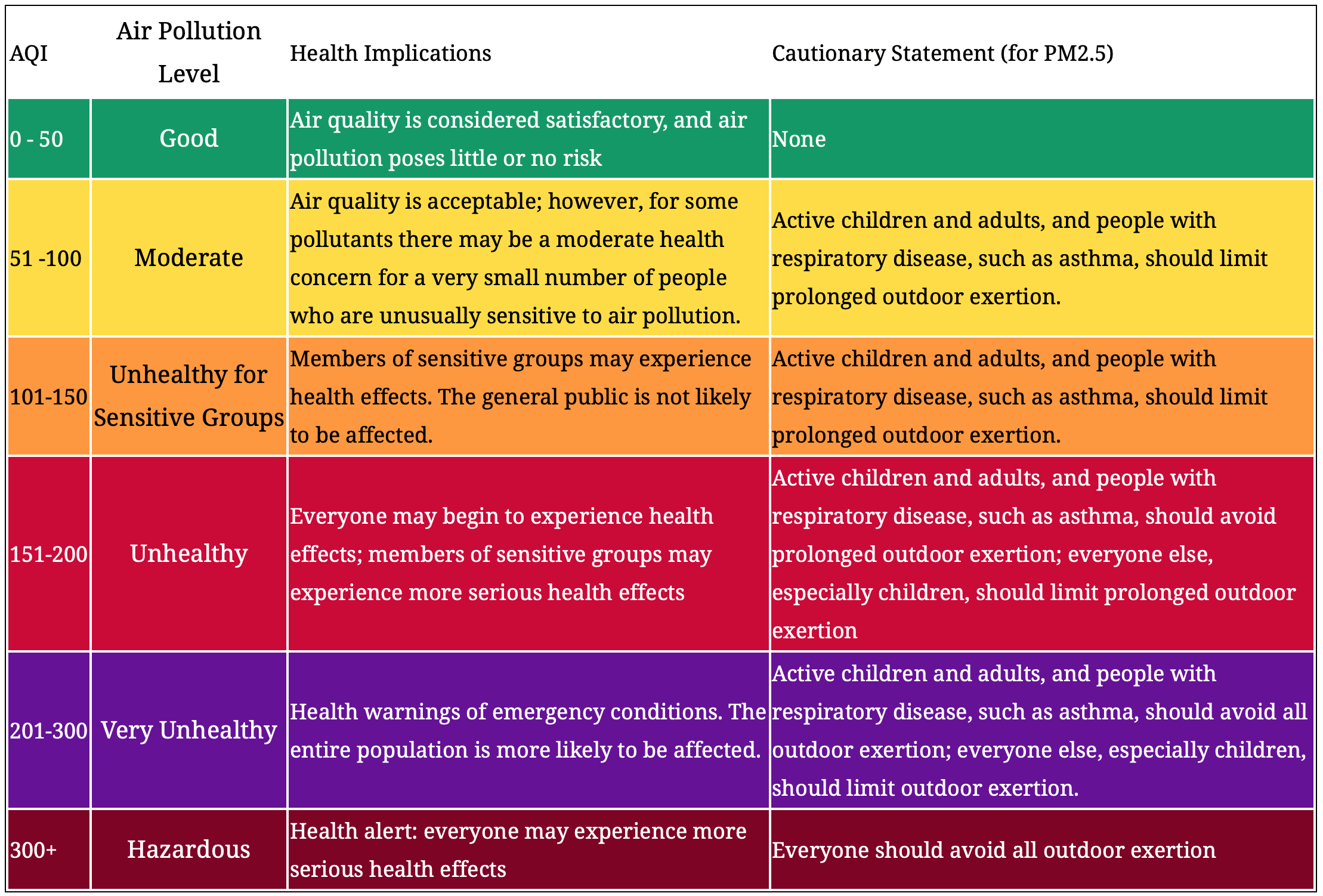
While Pakistan has its own AQI system (similar to India’s NAQI), I recommend using the U.S. EPA AQI for a more stringent and health-protective air quality assessment for those living in or visiting Pakistan. However, knowing the air quality index alone isn’t enough – it’s vital also to understand what every level of the index means and how you can act based on what the index tells you. But more on that soon!
The U.S. EPA AQI is a standardized indicator that provides clear information about how polluted the air is and how it might affect health. It’s calculated for five major air pollutants regulated by the Clean Air Act: ground-level ozone, particulate matter (PM2.5 and PM10), carbon monoxide, sulfur dioxide, and nitrogen dioxide. Each of these pollutants poses different risks to health and the environment.
The AQI scale ranges from 0 to 500. The values are divided into six colour-coded categories:
- Good (0-50): The air quality is considered satisfactory, and air pollution poses little or no risk.
- Moderate (51-100): Air quality is acceptable; however, there may be a risk for some people, particularly those who are unusually sensitive to air pollution.
- Unhealthy for Sensitive Groups (101-150): Members of sensitive groups may experience health effects. The general public is unlikely to be affected.
- Unhealthy (151-200): Everyone may begin to experience health effects; members of sensitive groups may experience more serious health effects.
- Very Unhealthy (201-300): Health alert: everyone may experience more serious health effects.
- Hazardous (301-500): Health warnings of emergency conditions. The entire population is more likely to be affected.
It’s important to note that the U.S. EPA’s AQI values are based on a 24-hour exposure period to these pollutants. This system is particularly useful in areas like Pakistan, where local AQI systems are more lenient in categorizations, potentially underrepresenting the health risks associated with air pollution. By using the U.S. EPA AQI, individuals in Pakistan can gain a more accurate understanding of the air quality and its potential health implications.
For those in Pakistan, accessing the U.S. EPA AQI can be done through various online platforms and mobile applications that provide real-time air quality information. Websites like the WAQI or mobile apps such as AirVisual offer AQI readings based on the U.S. EPA standards, which can be a valuable resource for locals and visitors in Pakistan to make informed decisions about their health and outdoor activities.
How Can Residents Protect Themselves from Air Pollution?
Stay Indoors
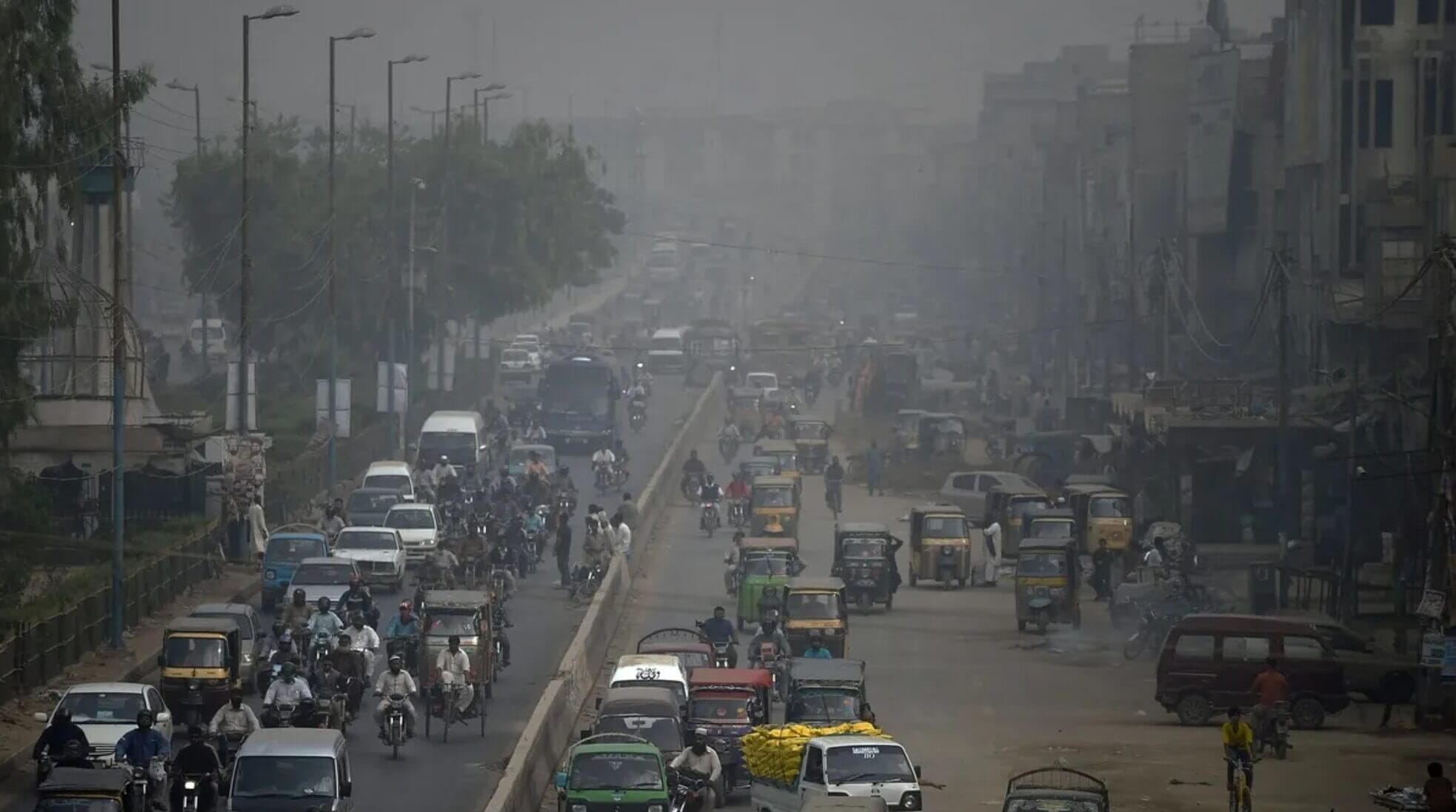
On days like this, staying inside is your best bet (if possible). Image source.
Protecting oneself from air pollution largely revolves around minimizing exposure to harmful pollutants. One effective way to do this is by choosing the right times for outdoor activities and understanding when it’s best to stay indoors. This approach is particularly vital in areas with high pollution levels, like Lahore. Here are some steps you can take to understand when staying inside is the best approach:
- Check the Air Quality Index (AQI): The first step is regularly monitoring the AQI, using reliable sources such as the U.S. EPA AQI or other reputable air quality monitoring apps and websites. The AQI provides real-time information about the level of pollutants in the air.
- High AQI Levels: Generally, when the AQI is above 100, sensitive groups, including children, the elderly, and those with respiratory or heart conditions, should limit outdoor activities. For the general population, an AQI over 150 is a signal to reduce physical exertion outdoors.
- Pollution Peaks: Air pollution often peaks during specific times of the day. Typically, pollution levels are higher during rush hour and lower in the early morning. Planning activities when pollution levels are lower can significantly reduce exposure.
- Adverse Weather Conditions: Certain weather conditions can exacerbate air pollution. For example, on days with little to no wind, pollutants can accumulate, leading to higher pollution levels. Conversely, wind can disperse pollutants but can also bring pollution from other areas. Smog and haze are visual indicators of poor air quality.
Exercise increases our breathing rate, which in turn can lead to inhaling more pollutants. Here are some guidelines:
- Avoid Exercise in High Pollution: It’s advisable to avoid outdoor exercise when the AQI is above 100. Indoor exercise is a safer alternative during these periods.
- Timing Your Exercise: If outdoor exercise is necessary, aim for times when the AQI is lower, typically in the early morning or later in the evening.
- Choosing the Right Location: Exercising away from high-traffic areas can also reduce exposure to vehicle emissions. Parks and green spaces can have better air quality compared to busy roads.
By following these guidelines, individuals can significantly reduce their exposure to harmful air pollutants. It’s also important to remember that everyone’s health situation is different, and those with pre-existing health conditions should consult their healthcare provider for personalized advice. Making informed decisions based on real-time air quality data is key to staying safe in polluted environments.
It is also important to note that while staying indoors is important to avoid the worst of air pollution, indoor air pollution can also be a problem. If you stay inside, be careful not to generate more pollution; otherwise, you will be unnecessarily exposing yourself. If possible, avoid cooking (or use a microwave), avoid using products like nail polish, and don’t burn candles. This leads us straight to the next point!
‘Lockdown’ Your House
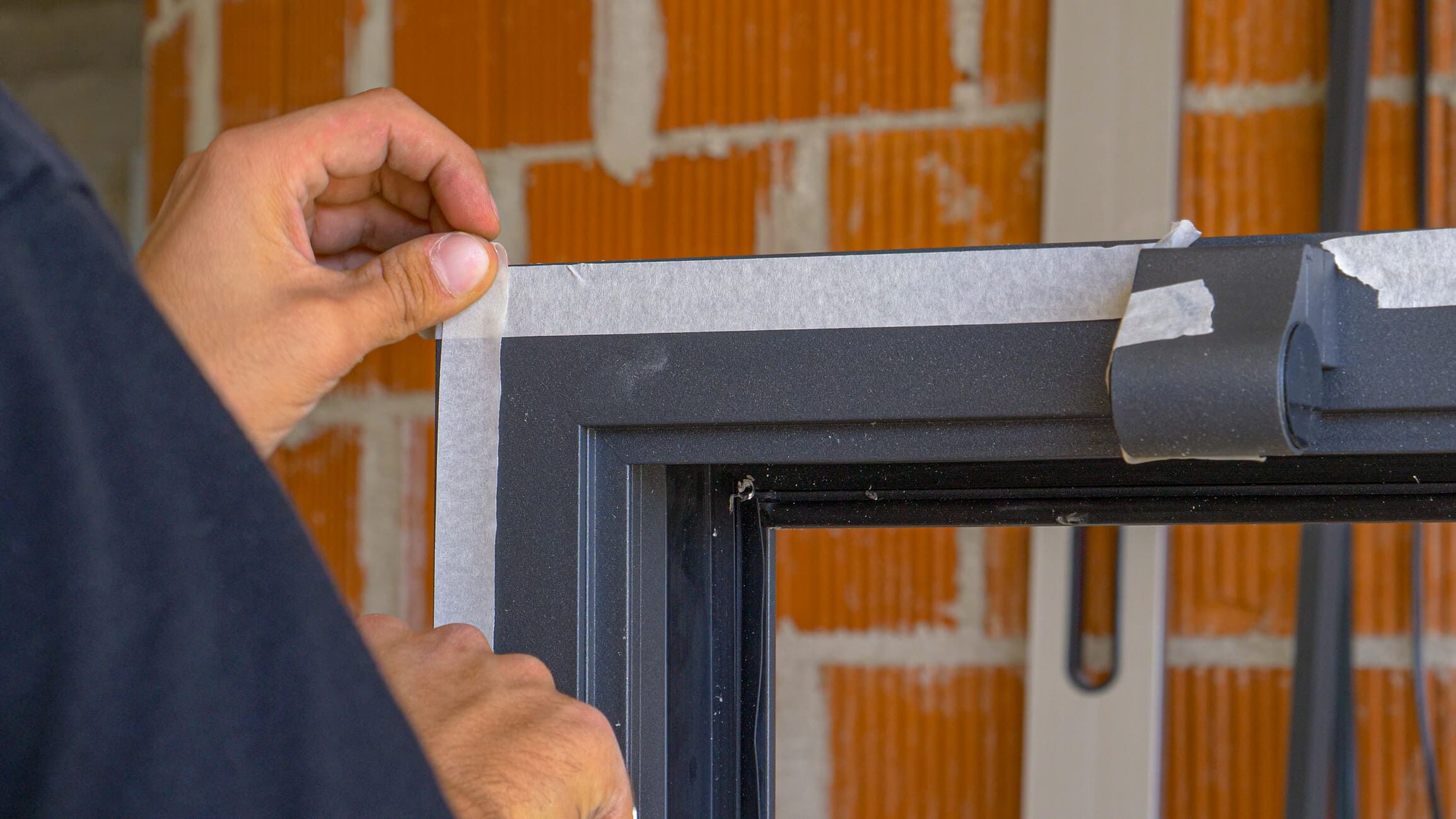
Locking down” your house to prevent air pollution infiltration is crucial, especially in regions like Pakistan, where air quality can be a significant concern. Air pollutants can seep into homes through various entry points, such as windows, doors, and extraction fans. Taking proactive measures to minimize this infiltration is key to maintaining a healthier indoor environment. Here are a few ways to keep pollutants out and prevent the creation of more pollutants inside.
- Seal Windows and Doors: One of the most common ways air pollution enters a home is through gaps in windows and doors. Use weather stripping or door sweeps to seal these gaps. For windows that are often left open for ventilation, consider using window sealing kits, especially during times of high pollution.
- Proper Ventilation: While it’s essential to seal your home, adequate ventilation is equally important to prevent indoor air pollutants from accumulating. Use extractor fans in areas like kitchens and bathrooms, but ensure they are well-sealed when not in use. On days when the outdoor air quality is better, ventilate your home to allow fresh air to circulate.
- Air Purifying Plants: Indoor plants can act as natural air purifiers. Species like spider plants, peace lilies, and snake plants are known for their air-purifying qualities. They can help absorb common pollutants and improve indoor air quality.
- Use Air Purifiers: High-efficiency particulate air (HEPA) purifiers can effectively filter out most airborne particles and are particularly useful in bedrooms and living areas. Ensure the purifier is appropriate for the size of the room and maintain it regularly for optimal performance.
- Limit Indoor Pollution Sources: Be mindful of indoor activities that can contribute to air pollution. These include smoking, using aerosol sprays, and burning candles or incense. Opt for natural cleaning products and avoid those that emit volatile organic compounds (VOCs).
- Regular Cleaning: Dust and vacuum your home regularly to reduce the accumulation of dust and particulate matter. Use a vacuum cleaner with a HEPA filter to prevent redistributing particles back into the air.
- Monitoring Indoor Air Quality: Consider investing in an indoor air quality monitor. This device can help you understand the pollutant levels inside your home and make informed decisions about ventilation and purification needs.
- Curtains and Blinds: Heavy curtains or blinds can act as an additional barrier to outdoor pollutants, especially during high pollution days.
By implementing these measures, you can significantly reduce the infiltration of outdoor air pollution into your home. It’s a balance between sealing your home to prevent outdoor pollution from entering and ensuring sufficient ventilation to maintain a healthy indoor air environment. These steps are especially important in areas like Pakistan, where external air quality can often be poor, and taking these precautions can significantly impact your indoor air quality and overall health.
Since a few of these steps are very important, I want to discuss them in more detail soon.
Wear a Respirator

In the face of Pakistan’s challenging air pollution scenario, protecting oneself when stepping outdoors becomes a serious health consideration. While avoiding exposure remains the best defence, there are times when venturing outside is inevitable. In such instances, wearing a high-quality respirator becomes not just advisable but essential for health protection.
It’s important to acknowledge that typical surgical and cloth masks fall short of offering protection against air pollution. These masks are primarily designed for source control and do not effectively filter out fine particulate matter, which is a major component of air pollution. Respirators such as N95, KN95, or KF94 are necessary for adequate protection. While these respirators can be harder to find in Pakistan, they are your best bet for protection.
N95 respirators, certified by the U.S. National Institute for Occupational Safety and Health (NIOSH), are designed to filter out at least 95% of airborne particles, including the small but harmful particulate matter PM2.5. Their efficacy lies in their filtration ability and their design to fit snugly against the face, creating a tight seal that prevents unfiltered air from being inhaled. However, for the best protection, you will need to be fit-tested.
Similar standards, like the KN95 and KF94, offer comparable levels of protection. The KN95 is a Chinese standard, and the KF94 is a South Korean standard designed to achieve filtration efficiency similar to the N95. However, a key aspect to consider is the fit. Respirators with headbands, such as the N95, typically provide a more secure fit than those with ear loops, a common feature in some KN95 and KF94 models. A secure fit is crucial in ensuring that air does not bypass the filter through gaps.
For those days when air pollution levels are particularly hazardous, one might even consider a half-face respirator. These respirators offer a more robust seal and filtration capability, making them suitable for extremely poor air quality conditions. However, they can be more cumbersome and may not be necessary for everyday use.
When using these respirators, it’s important to ensure they are genuine and certified. The market is fraught with counterfeit products, so verifying certification and purchasing from reputable sources is crucial. Additionally, while N95 and its counterparts are designed for single use in clinical settings, in the context of air pollution, they can be used multiple times unless they become soiled or damaged or breathing through them becomes difficult.
Despite their effectiveness, it’s important to recognize the limitations of these respirators. They are highly effective against particulate matter but do not filter out gases or chemical vapours. Moreover, wearing a respirator can pose additional breathing challenges for individuals with pre-existing respiratory conditions. In such cases, consulting with a healthcare professional is advisable to determine the most suitable form of protection.
Use Air Quality Monitors

The AirGradient Open Air is an affordable outdoor air quality monitor.
In Pakistan, where air pollution is a pressing health concern, air quality monitors – encompassing indoor, outdoor, and portable devices – emerge as an essential strategy for individuals to gauge air quality in their immediate surroundings. This approach is particularly crucial in rural areas, where access to official air quality data is often limited due to the scarcity of monitoring stations.
Air quality monitors, in their various forms, offer real-time insights into the levels of pollutants, empowering users to make informed decisions about their exposure and activities. In a context like Pakistan, where indoor and outdoor air pollution presents significant risks, these devices become indispensable in managing personal and communal health.
Indoor Air Quality Monitors
Indoor air quality monitors serve a pivotal role in detecting pollutants within homes and workplaces. These pollutants, including particulate matter, carbon monoxide, VOCs, and radon, often stem from everyday sources like cooking, burning fuels, household cleaners, and building materials. In rural Pakistan, traditional biomass-burning cooking methods can notably deteriorate indoor air quality. With the aid of indoor monitors, residents can identify and mitigate high pollutant levels by improving ventilation, adopting cleaner cooking and heating methods, or using air purifiers.
Outdoor Air Quality Monitors
Outdoor air quality monitors are equally vital, particularly for measuring pollutants such as PM2.5, PM10, nitrogen dioxide, sulfur dioxide, and ozone. In rural Pakistan, the sources of pollution might differ from urban areas, with factors like dust, agricultural burning, or emissions from localized industries being more prevalent. These monitors enable rural residents to understand local air pollution levels, forming the basis for community planning and advocacy. By providing tangible data, these monitors can be instrumental in requesting improvements or interventions from authorities.
Portable Air Quality Monitors
The versatility of portable air quality monitors lies in their ability to assess air quality on the go. They are especially beneficial for individuals who frequently travel between varied environments, such as rural and urban settings. By offering real-time air quality assessments, these portable devices enable users to take immediate precautionary measures, such as avoiding high-pollution areas or choosing cleaner commuting routes.
In rural regions of Pakistan, deploying these monitors can empower communities by providing access to previously unavailable data. This information is not only pivotal for managing individual health but also for making informed community-level decisions. For instance, consistent data showing high indoor pollution levels from traditional cooking methods could catalyze a shift towards cleaner cooking technologies within the community.
Moreover, the collective data from these monitors holds significant value for researchers and policymakers. It can help bridge the gaps in national air quality monitoring networks, leading to more targeted and effective policies and interventions for both rural and urban areas.
Conclusion
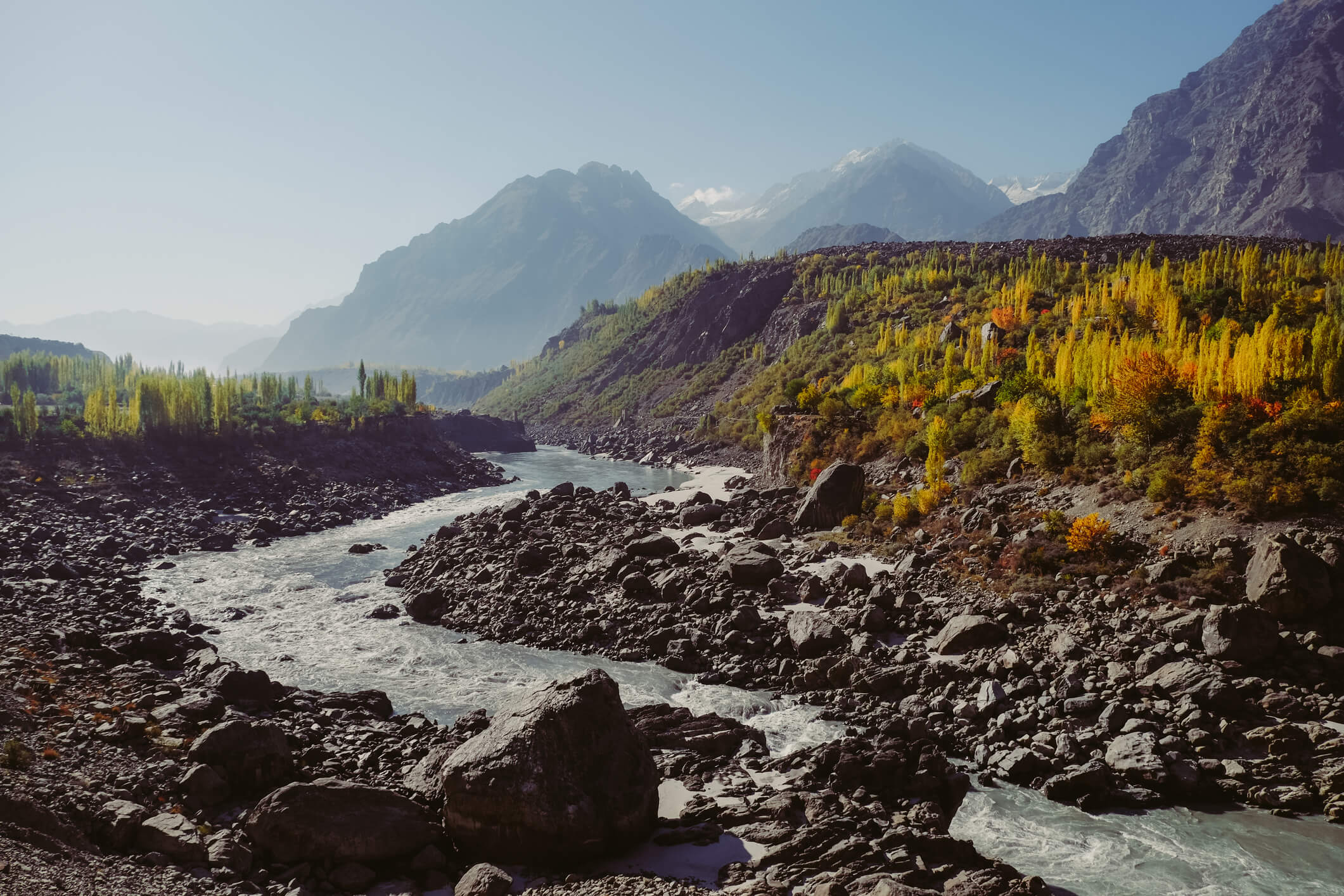
In conclusion, air pollution in Pakistan presents a multifaceted challenge, marked by its detrimental impact on public health, economic vitality, and environmental sustainability. The journey from the rapid industrialization and urbanization of the late 20th century to the present day has seen escalating pollution levels, particularly in major cities like Lahore, Karachi, and Islamabad. This trajectory underscores the urgent need for comprehensive solutions and robust policy interventions.
Despite these challenges, Pakistan remains a country of immense cultural richness and natural beauty. For those planning to visit, it’s essential to be mindful of the air pollution situation but not deterred. By staying informed about the air quality and taking protective measures like wearing N95 respirators and utilizing air quality monitors, visitors can safely enjoy what Pakistan has to offer. Similarly, for residents, while air pollution is a significant concern, there are practical steps to mitigate exposure and safeguard health, such as ‘locking down’ homes to prevent pollution infiltration and staying indoors when pollution levels are high.
Throughout this article, I’ve explored the causes and impacts of air pollution in Pakistan, drawing parallels with other regions facing similar challenges and examining the government’s efforts to address this crisis. This analysis has highlighted the importance of awareness, preparedness, and proactive measures in combating air pollution.
As we look forward, it’s clear that tackling air pollution in Pakistan requires a collective effort. This involves not only government action but also individual responsibility and community engagement. By embracing sustainable practices, advocating for cleaner technologies, and prioritizing health and environmental well-being, we can work towards a future where the air in Pakistan is cleaner and safer for everyone.
So, whether you are a visitor with plans to explore Pakistan’s wonders or a resident navigating daily life, remember that while the challenge of air pollution is significant, it is not insurmountable. With awareness and the right precautions, you can protect yourself from its worst effects and contribute to a cleaner, healthier environment.
Pakistan Air Pollution FAQ
Which cities in Pakistan rank among the world’s worst cities for particulate air pollution?
Historically, cities like Lahore, Karachi, and Faisalabad have been ranked among the world’s worst cities for air pollution, particularly for particulate matter (PM2.5 levels). These cities often experience high levels of smog, especially during certain times of the year.
What is being done about the air pollution in Pakistan?
Efforts to address air pollution in Pakistan include the implementation of the Clean Green Pakistan movement, the introduction of policies to reduce industrial emissions, the conversion of motor vehicle fuel from diesel to natural gas, and increasing the number of green spaces. The government and various NGOs are also working to raise public awareness about the issue.
Why is air pollution a problem in Pakistan?
Air pollution is a significant health hazard, contributing to respiratory illnesses, cardiovascular disease, and premature deaths. It also affects the environment, leading to problems like acid rain, reduced agricultural yields, and damage to wildlife.
Why is Pakistan affected by air pollution?
Factors contributing to Pakistan’s air pollution include rapid industrialization, vehicle emissions, energy production relying heavily on fossil fuels, burning of crop residue, and geographical factors that can trap air pollutants.
Why does Pakistan have so much air pollution?
Besides the reasons mentioned above, Pakistan’s high air pollution levels can also be attributed to urbanization without adequate environmental regulations, lack of enforcement of existing laws, and the seasonal burning of solid waste.
How do people protect themselves from air pollution in Pakistan?
Individuals can protect themselves by staying indoors on days when air quality is particularly poor, using air purifiers at home, wearing masks, planting trees, and advocating for stronger pollution controls.
Have Questions or Comments?
Join the discussion on the BreatheSafeAir Community Forum. Ask any questions you have about air quality or adjacent topics and get quick answers!

